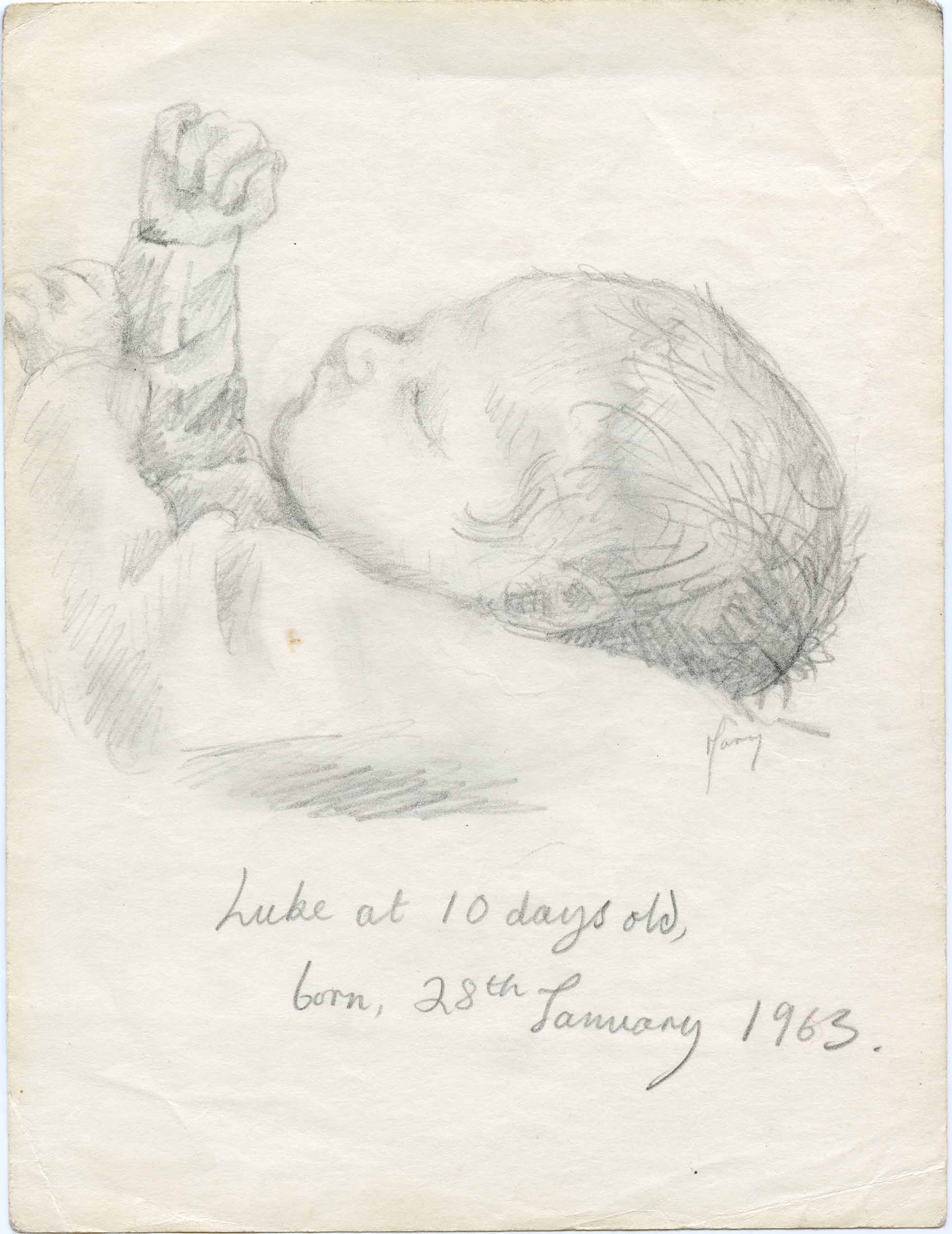Beyond the nuclear family
An unprecedented Fitzwilliam exhibition explores the family, informed by psychological research. Visitors are in for an emotional rollercoaster.
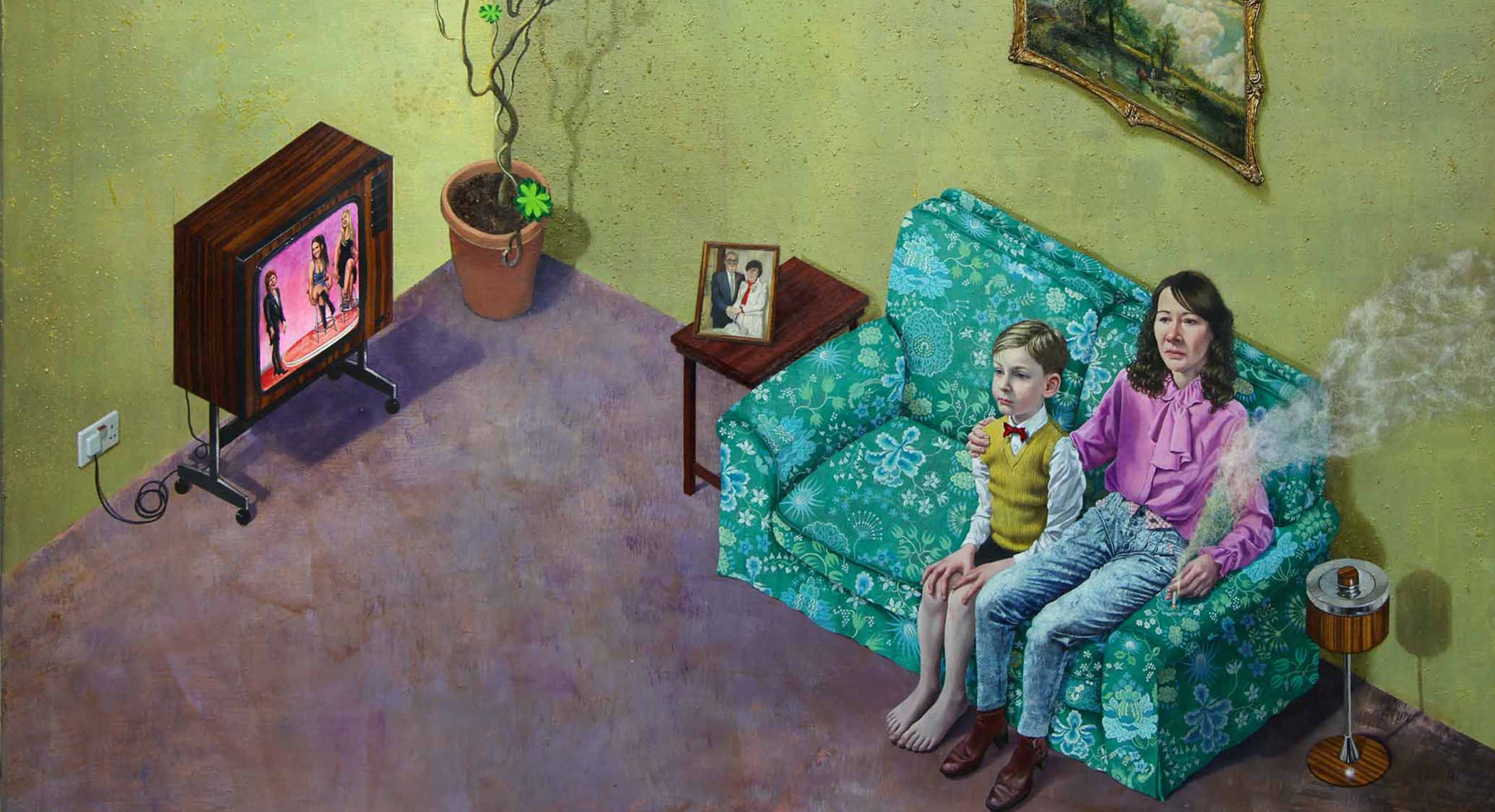
In 2007, a young man came across an artwork in the Murray Edwards Women’s Art Collection that changed his life.
In a collage entitled Dreams, Oracles, Icons ... (1991), he discovered a tiny painting of himself as a baby, frozen in time and ‘falling away’ from his birth mother, the artist Mary Husted. Genealogical research and an email completed what art had begun. Mother and son were reunited, 44 years after being forced apart.
In 1963, Mary, then an unmarried eighteen-year-old art student, gave birth to Luke. She had known for months that they would not have long together. Her family had decided that Luke would be put up for adoption. Mary had no say.
They spent just ten days together and Mary drew him because she knew that these drawings would be all she could keep. She drew her baby several times, including at ten days old, when he was taken from her.
A trio of these heartbreakingly tender drawings, together with the collage which Husted made 28 years later, as she searched for her son, go to the very heart of the Fitzwilliam’s major new exhibition Real Families: Stories of Change (6 October 2023 – 7 January 2024).
The curator
The exhibition’s curator, Susan Golombok, is not an art historian but a psychologist. Professor Emerita of Family Research and former Director of Cambridge’s Centre for Family Research, Golombok’s research has examined the impact that new family forms have had on parenting and child development since the mid-1970s.
Golombok’s work has focused on families created by different kinds of assisted reproduction including egg and sperm donation, IVF and surrogacy, and families with LGBTQ+ parents. These families have only come to light, or become possible, over the course of Golombok’s career. Many human stories stick in her memory, highlighting the profound shifts in family structures and societal reactions that have taken place over the past 50 years.
“In my very first study, I met a 5-year-old boy who was extremely hyperactive. He was from a lesbian mother family, and I remember wondering how his mothers coped as he was constantly on the go.
“We followed up the families when the children were in their 20s and I remember him then as very calm and composed, not at all what I expected from my memory of him. Growing up in a lesbian mother family had been difficult. He’d been stigmatised and bullied at school but now he was at art school, and it was considered really cool to have lesbian parents.”
One of the paintings Golombok selected for the exhibition is Aliza Nisenbaum’s, Susan, Aarti, Keerthana and Princess, Sunday in Brooklyn. Painted in 2018, it depicts a lesbian mother family and their two children.
“It’s a very colourful, relaxed, beautiful painting and it perfectly sums up our 40 years of research on lesbian mother families.”
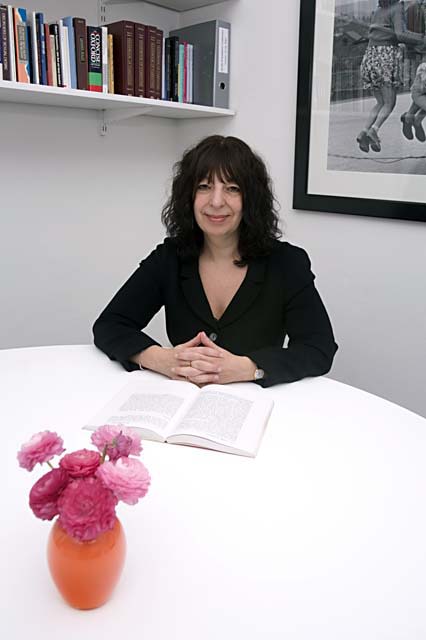
Professor Susan Golombok
Professor Susan Golombok
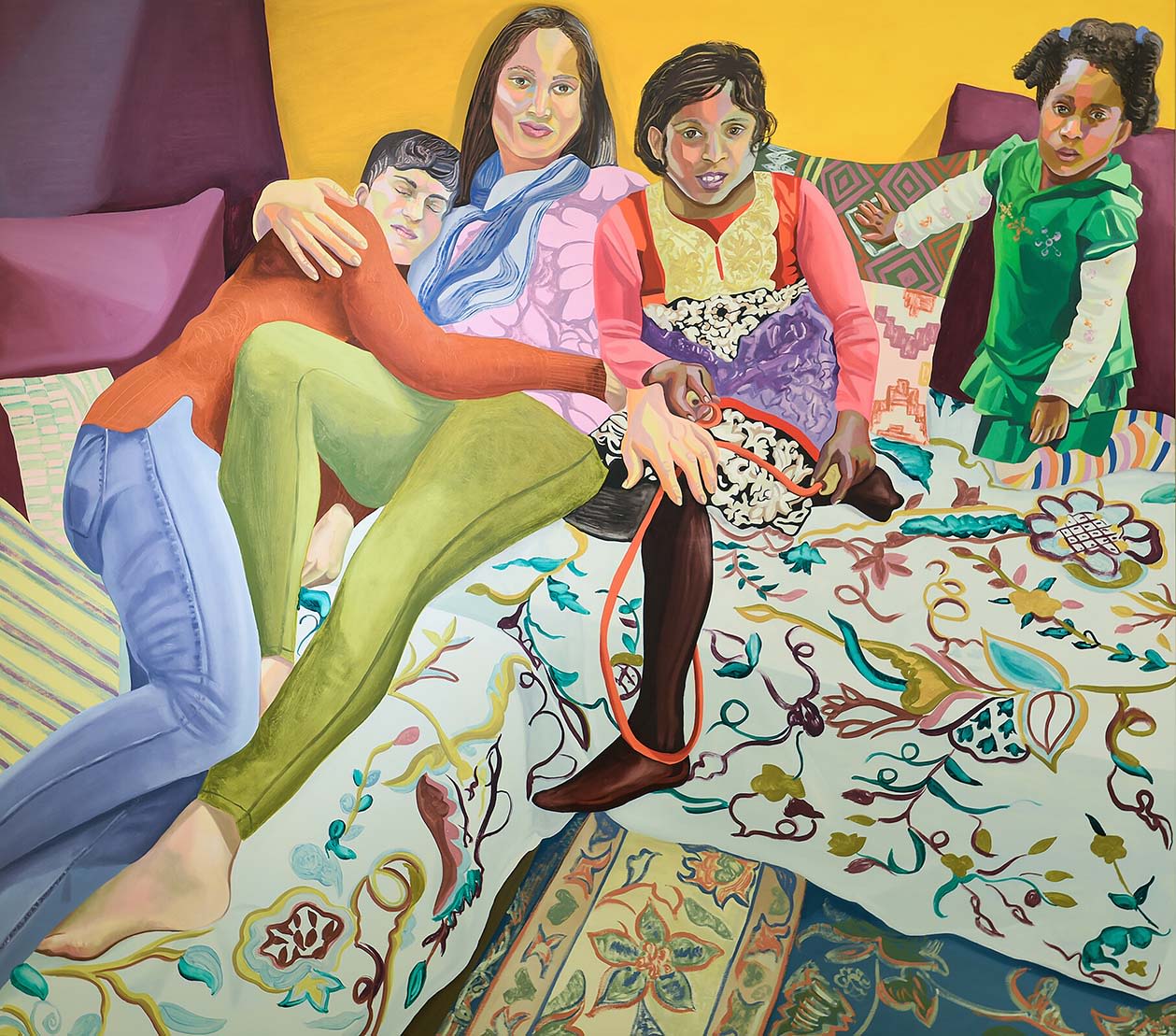
Aliza Nisenbaum, Susan, Aarti, Keerthana and Princess, Sunday in Brooklyn (oil on linen, 2018)
Aliza Nisenbaum, Susan, Aarti, Keerthana and Princess, Sunday in Brooklyn (oil on linen, 2018)
The power of art
This wasn’t the first time Golombok had considered art’s ability to convey what her team’s painstaking academic work was showing.
In 2015, she took a break from a psychology conference to visit a Cathy Wilkes exhibition at Tate Liverpool. She was mesmerised by the artist’s 2013 installation Untitled (Possil, At Last).
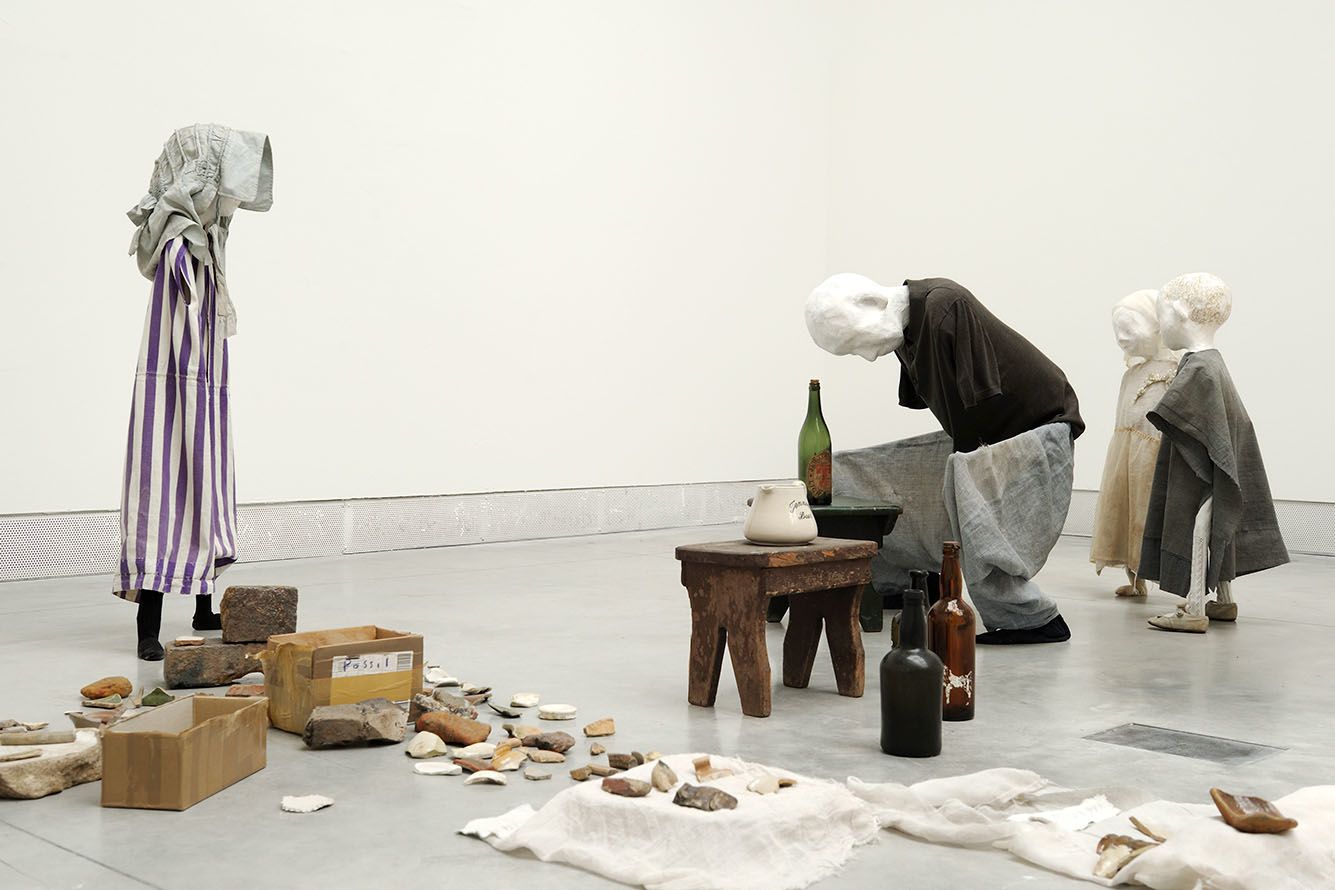
Cathy Wilkes, Untitled (Possil, At Last) (mixed media, 2013)
Cathy Wilkes, Untitled (Possil, At Last) (mixed media, 2013)
“It was so moving, with its downtrodden-looking father hunched over a beer bottle and two small, vulnerable children standing behind him. It summed up much of the research we'd been doing, which isn’t just about how family influences children’s development and well-being, but also the impact of the wider social and political environment.”
“It really struck me that artists can convey the emotions of family relationships in a more direct way than statistics and psychological theory. Research on families is what I do, and it’s important, but in terms of communicating our findings more broadly, art can often do this so much better.”
During the Fitzwilliam’s exhibition, the installation will have pride of place in the museum’s Octagon Gallery.
Golombok discussed the idea for an exhibition on the family with the Fitzwilliam’s Director, Luke Syson, and an unconventional collaboration started to take shape. The Fitzwilliam regularly collaborates with academic departments at Cambridge but as Golombok says, there wasn’t an obvious connection to the Centre for Family Research.
“There is a long history of conversation between psychoanalysis and art, but that's different because what we do at the Centre is empirical research. I think what we’re producing together is really innovative.”
Opening minds
Golombok expects the exhibition to generate powerful emotions and, for particular artworks, perhaps to divide opinion.
“I would like visitors to open up their minds more to different kinds of families and be more accepting of families that they might have either felt outright prejudice against, or just thought, ‘Hmm, I can't imagine that kind of family is great for children’.
“I also hope that the show will allow visitors to reflect on their own families. I expect that the artworks will resonate differently with different people, depending on their own experiences of family.”
The exhibition opens with the 1976 cover of Spare Rib, a feminist magazine. The cover bears testimony to an era when lesbian women had their children removed from them when they fought their ex-husbands for custody.
“That's when I first became involved in this whole field,” Golombok recalls. “I was a master’s student studying child development and I was interested in the women's movement. The article asked for someone to carry out objective research on the children and I volunteered. The findings showed that the assumptions that led to these children being removed from their mothers in child custody cases were false.”
“Then, in 1978, IVF arrived, again raising concerns about the children. In the media, there was talk of ‘Frankenstein children’. Some articles even suggested that these children might be born without a soul.”
The exhibition showcases a glass jar in which some of the first IVF babies were conceived in the late 1970s. This became possible through the work of Nobel-Prize-winning scientist, Dr Robert Edwards, at Cambridge, and the obstetrician, Patrick Steptoe.
Nearby, visitors are reminded that while IVF brings joy to some, the treatment can be agonising for others. Elina Brotherus’ Annonciation 7, Jour de l’ Annonciation (2011) relates to the artist’s five years of unsuccessful IVF treatment. Brotherus references the Christian Annunciation but describes her own experience as ‘waiting for an angel who never shows up’.
The exhibition does not shy away from addressing the broader question of what defines a family. Miriam Schaer’s work, which displays baby clothes embroidered with some of the insensitive comments people make to women who don’t have children, such as “Children are what makes a real family”, challenges deep-seated societal norms.
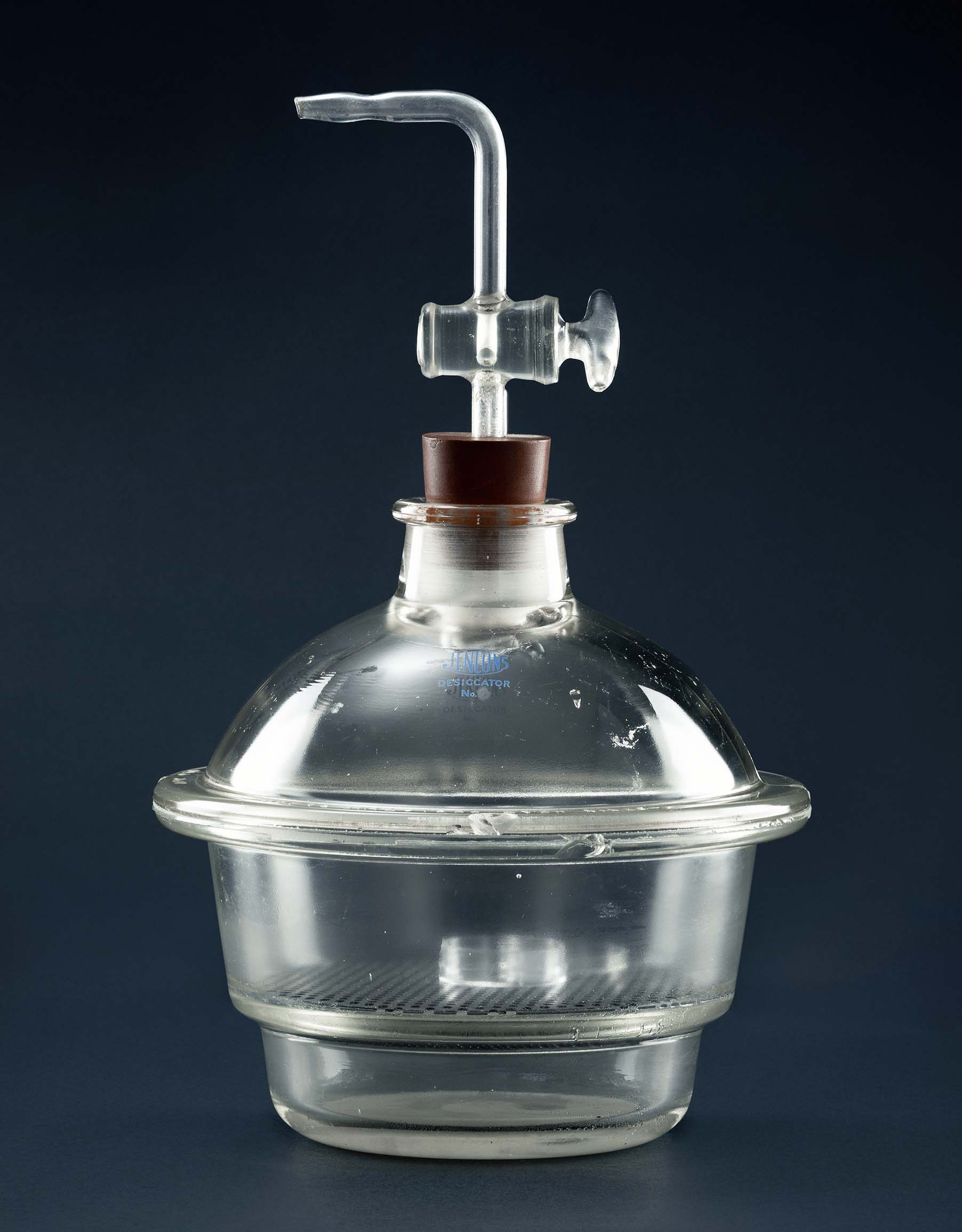
Unknown maker, Vacuum desiccator bell jar (about 1968–77)
Unknown maker, Vacuum desiccator bell jar (about 1968–77)
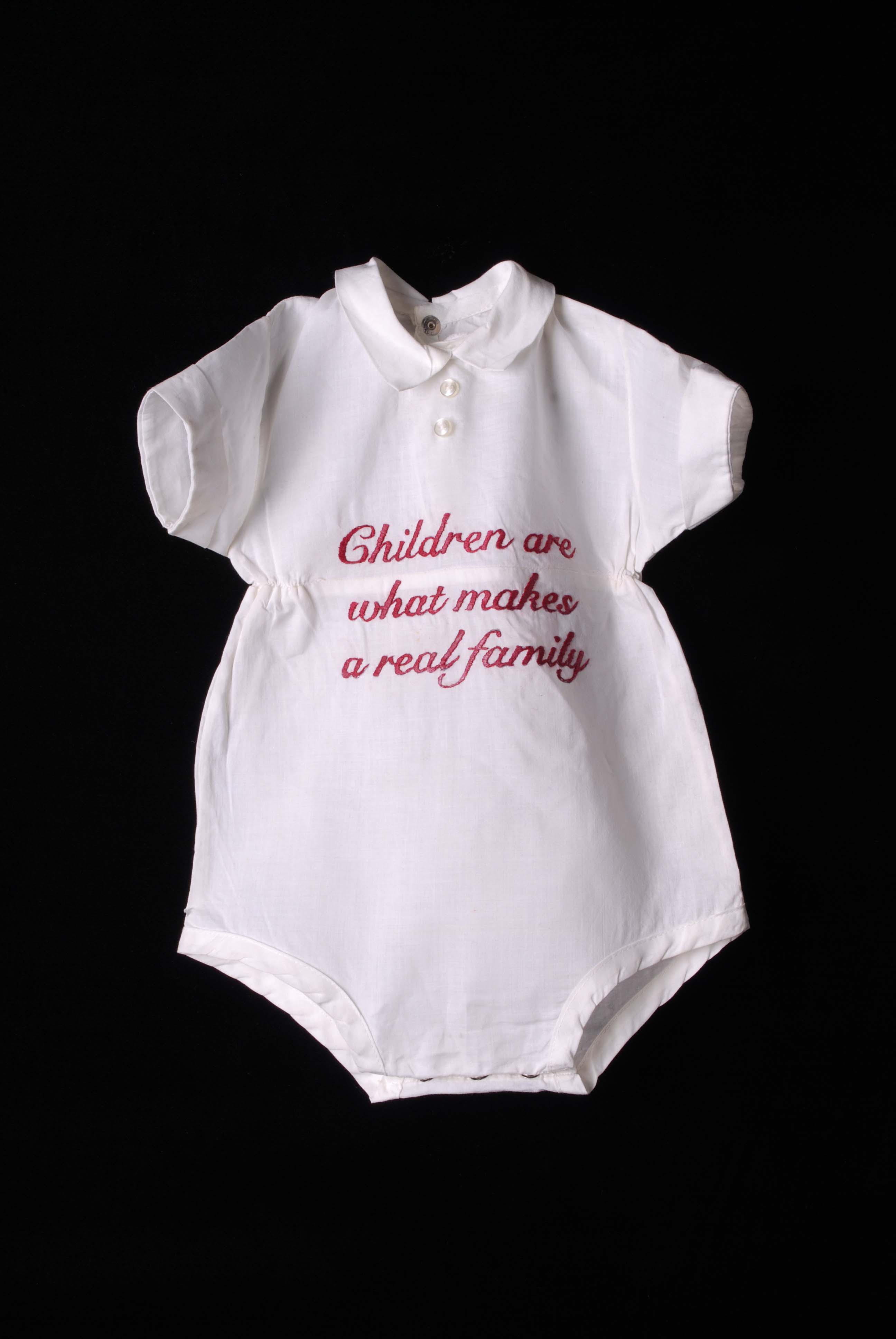
Miriam Schaer, Untitled #11 (‘Children are what makes a real family’). From the series Babies Not On Board: The Last Prejudice? (hand embroidery on baby cotton rompers / dresses, about 2012)
Miriam Schaer, Untitled #11 (‘Children are what makes a real family’). From the series Babies Not On Board: The Last Prejudice? (hand embroidery on baby cotton rompers / dresses, about 2012)
Fifty years of change
When Golombok began researching in the mid-1970s, she had no idea that families were going to change so dramatically. “I thought I was doing a small master’s project and then new kinds of families kept appearing, each raising different kinds of questions.”
IVF led the way for children to be born through embryo and egg donation. Sperm donation has a longer history, but it became more widely practiced as a treatment for male infertility following the introduction of IVF. Then came surrogacy, single mothers by choice, gay father families, and, more recently, single fathers by choice.
“This was all unfolding in society, offering a natural experiment for us to study the ways in which different family structures impact on the quality of relationships between parents and children, and on the children themselves.
“It became clearer and clearer to me that family structure didn’t matter nearly as much as people believed. What mattered most was the quality of relationships within the family and the extent to which they were accepted or stigmatised in the outside world.”
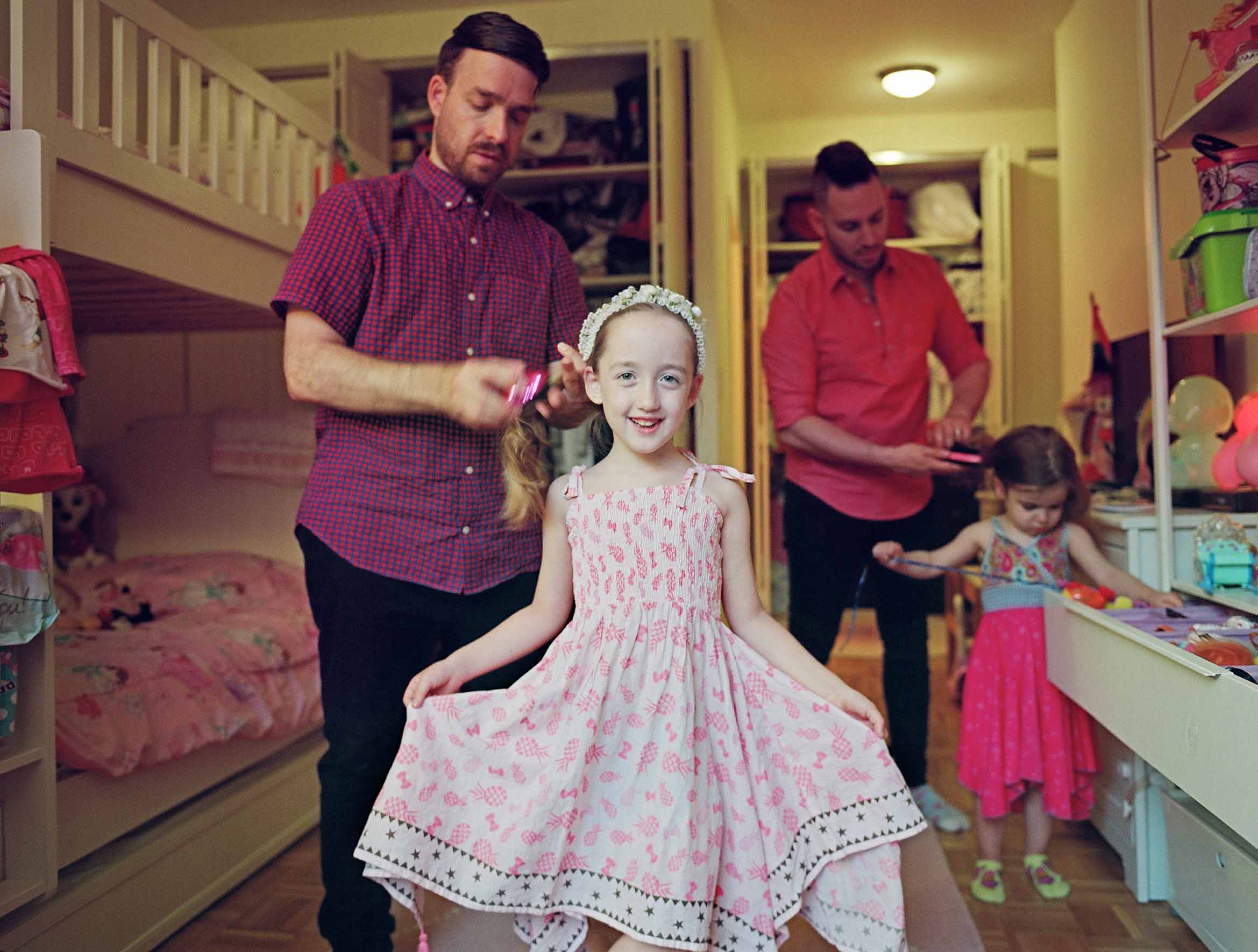
Bart Heynen, Milo with her fathers and sister. New York City. From the photographic project Dads (inkjet print on photo rag paper, 2021)
Bart Heynen, Milo with her fathers and sister. New York City. From the photographic project Dads (inkjet print on photo rag paper, 2021)
The exhibition features Bart Heynen’s 2021 photograph Milo with her fathers and sister. New York City. Himself a gay father, Heynen says: “We all come from straight parents and have very few role models. So I wanted to see what other families with gay dads were like. Also, for my kids, it was important to meet other dads and kids.”
Another photographic portrait from the same year appears to show a traditional family of a mother, father, son and daughter. But look more closely at JJ Levine’s Alone Time 19 and it becomes clear that the mother and father are the same person, and the son and daughter are the same child. JJ Levine, who identifies as queer and trans, questions the idea that gender identity, gender roles and sexuality cannot change.
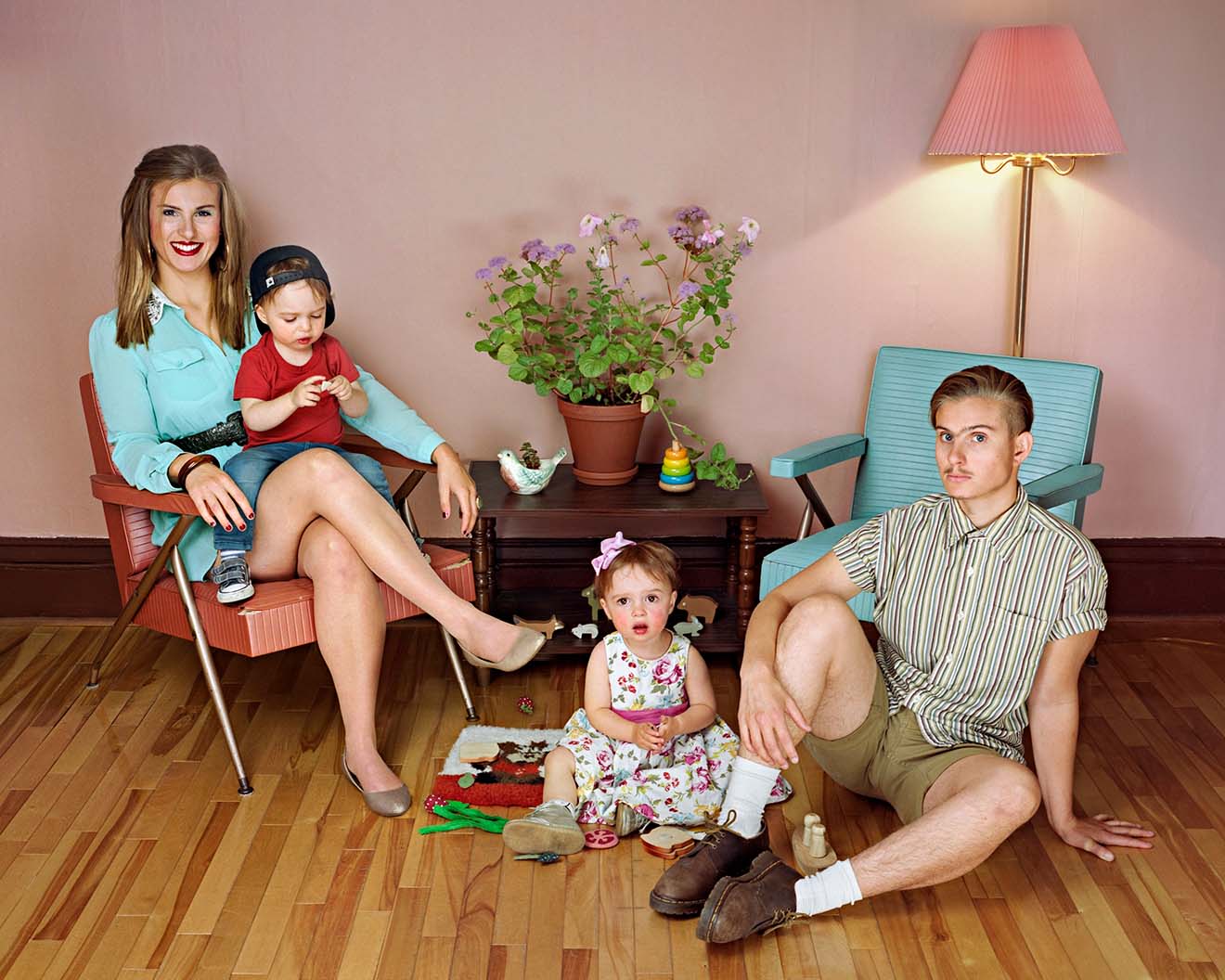
JJ Levine, Alone Time 19 (C-print, edition 2/3, 1ap, 2021)
JJ Levine, Alone Time 19 (C-print, edition 2/3, 1ap, 2021)
Historical context
The exhibition is dominated by paintings, photography and sculpture created in the last fifty years, but features paintings going back to the early seventeenth century. Dirck van Baburen’s Roman Charity, Cimon and Pero (1618–24), which Professor Mary Beard urged Golombok to include, will challenge visitors as much as any of the 21st-century exhibits.
The exhibition opens with the Fitzwilliam’s very own Joshua Reynolds portrait of The Braddyll Family (1789). It projects traditional notions of family and lineage, excluding all three Braddyll daughters in the process. Unable to inherit or pass on their father’s name, they had no place in this image of family.
Golombok is particularly intrigued by Joseph-Marie Vien’s painting Sarah Presents Hagar to Abraham (1749). Abraham needs an heir and because his wife Sarah is unable to conceive, he impregnates Hagar, their Egyptian slave.
“Looking at this painting through a contemporary lens, this to me is suggestive of surrogacy, which is interesting because surrogacy is seen today as something very new.”
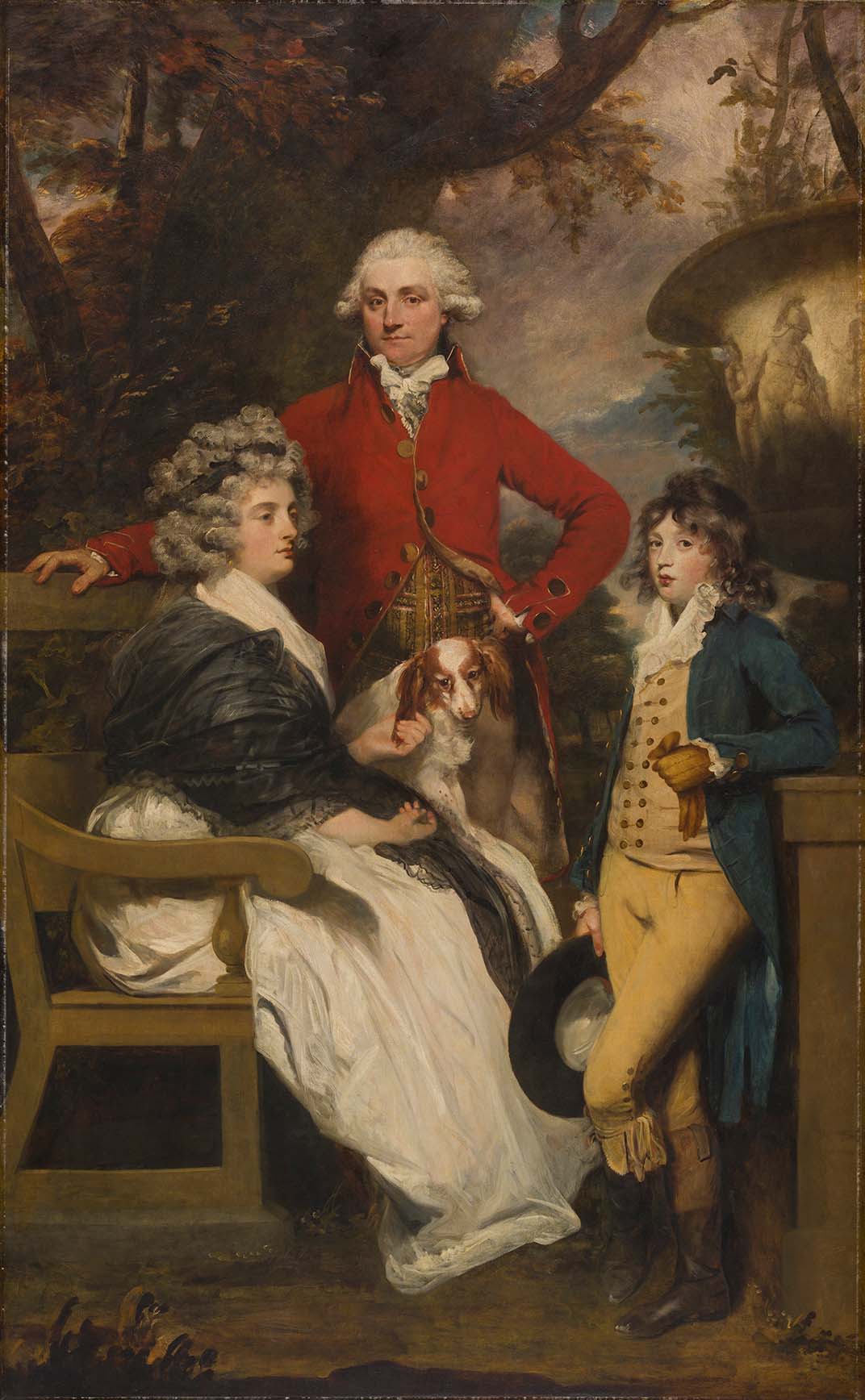
Joshua Reynolds, The Braddyll Family (oil on canvas, 1789)
Joshua Reynolds, The Braddyll Family (oil on canvas, 1789)
Belonging
Golombok’s research provokes strong emotions and sometimes considerable hostility. “I'm kind of used to it, it doesn't bother me now,” she says.
“We study families where children have been conceived by donor conception and there's a debate that's still raging about whether parents should be open with their children about their origins or not.
“Our findings show that generally it's beneficial for children if parents tell them about their conception when they're young. Some people don't like us saying this, but others feel angry that we don’t say it more strongly.”
One of the most striking donor conception-related works in the exhibition is Stuart Pearson Wright’s unsettling painting Halfboy and Halfsister (2018).
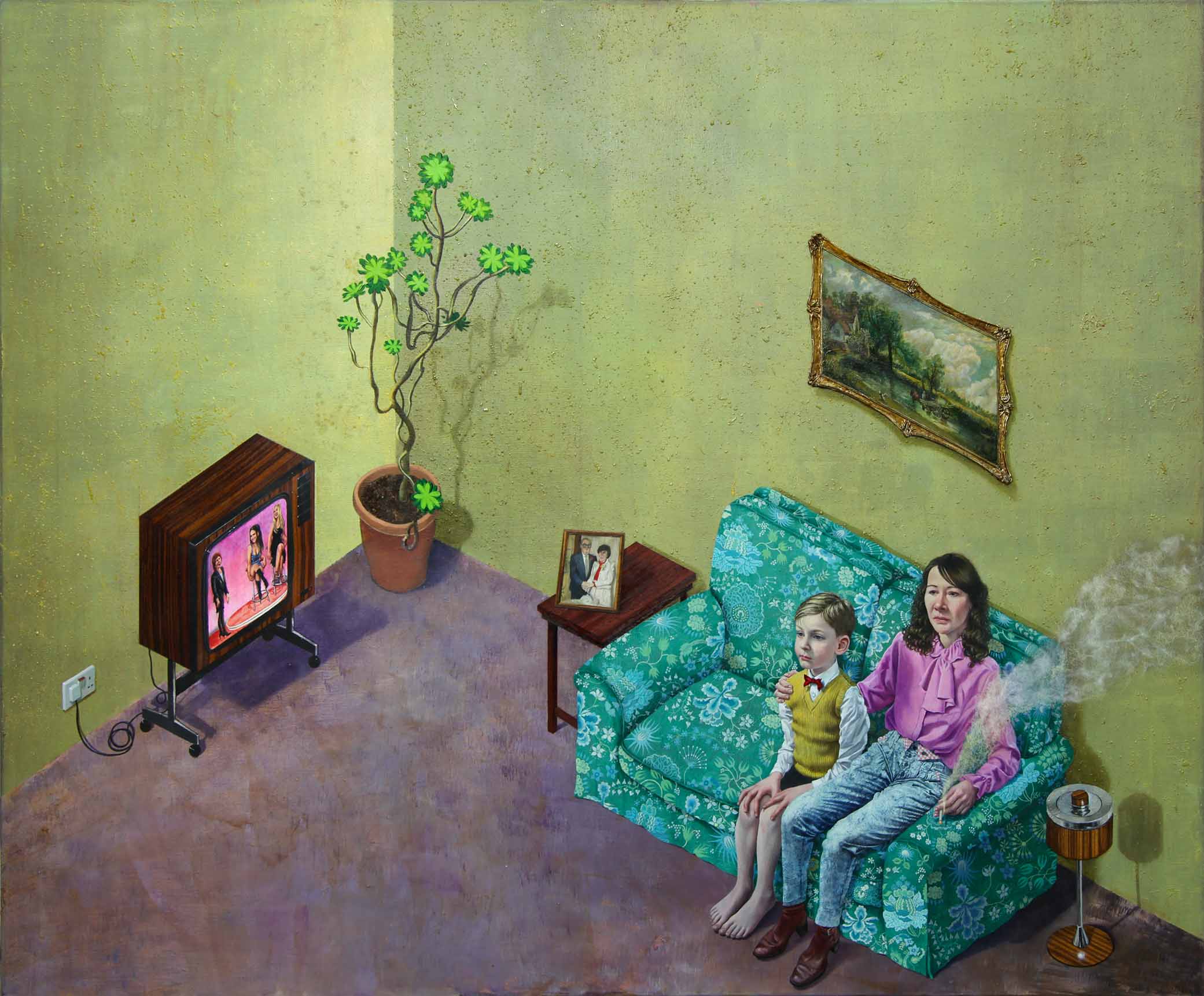
Stuart Pearson Wright, Halfboy and Halfsister (oil, sheep’s wool, zebrawood, wire and mixed media on linen, 2018)
Stuart Pearson Wright, Halfboy and Halfsister (oil, sheep’s wool, zebrawood, wire and mixed media on linen, 2018)
The artist was conceived in 1975 by anonymous sperm donation in a London fertility clinic. Forty-four years on, in 2019, he found his donor, a man he now refers to as his father. This painting expresses Pearson Wright’s feelings of distance and separateness from his half-sister when he was a boy, which he attributes in part to his donor conception.
Golombok points out that the artist’s deep distress at not knowing the identity of his biological father is not representative of most donor-conceived people. But the painful feeling of not belonging reappears in other artworks and contexts throughout the exhibition, not least in Caleb Cole’s haunting Stripes (2018).
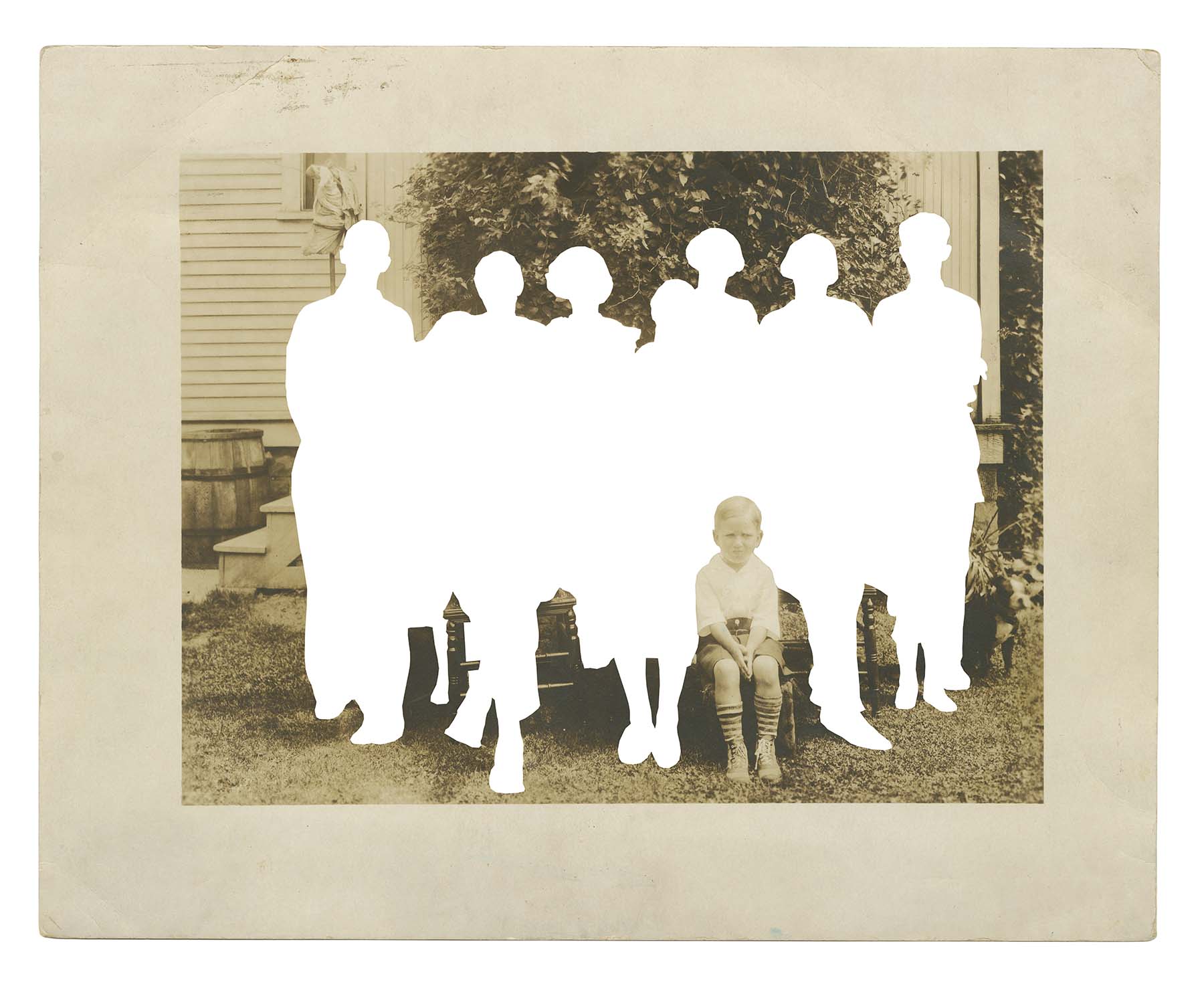
Caleb Cole, Stripes. From the series Odd One Out (inkjet print made with Epson’s archival ink, 2018)
Caleb Cole, Stripes. From the series Odd One Out (inkjet print made with Epson’s archival ink, 2018)
Life cycle
In addition to representing new, and not so new, non-traditional family forms, the exhibition considers dynamics found in all families, some positive, some negative.
Another section explores how families change over time, including the experiences of children growing up and caring for ageing parents.
Celia Paul’s painting My Mother with a Rose (2006) “reflects the altered nature of her relationship with her mother,” says Golombok. “It depicts an initially reluctant elderly sitter who became dedicated to the project”. The artist says: “It came to mean everything to her. It became her vocation.”
The exhibition closes with ten paintings by Chantal Joffe, including Mother and Child II (2005). Golombok explains why:
“At the Centre, much of our research is longitudinal – we follow up families, often from infancy and even from pregnancy, sometimes up to adulthood. Chantal Joffe does the same with her art.
“But I especially love her work because it’s deeply psychological. It's all about the nuances in family relationships: the affection but also the tensions, and the transformations that families undergo over time.”
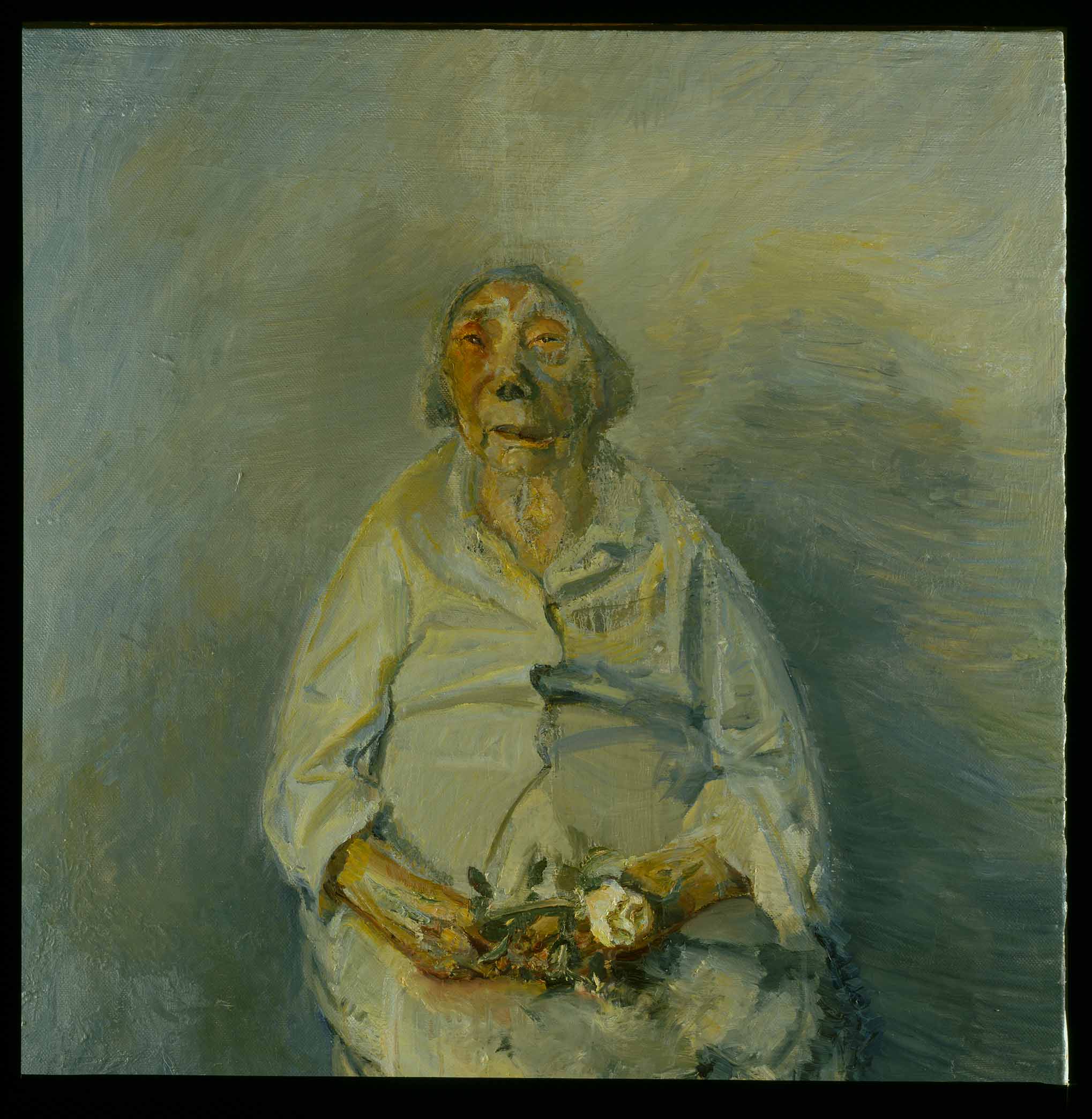
Celia Paul, My Mother with a Rose (oil on canvas, 2006)
Celia Paul, My Mother with a Rose (oil on canvas, 2006)
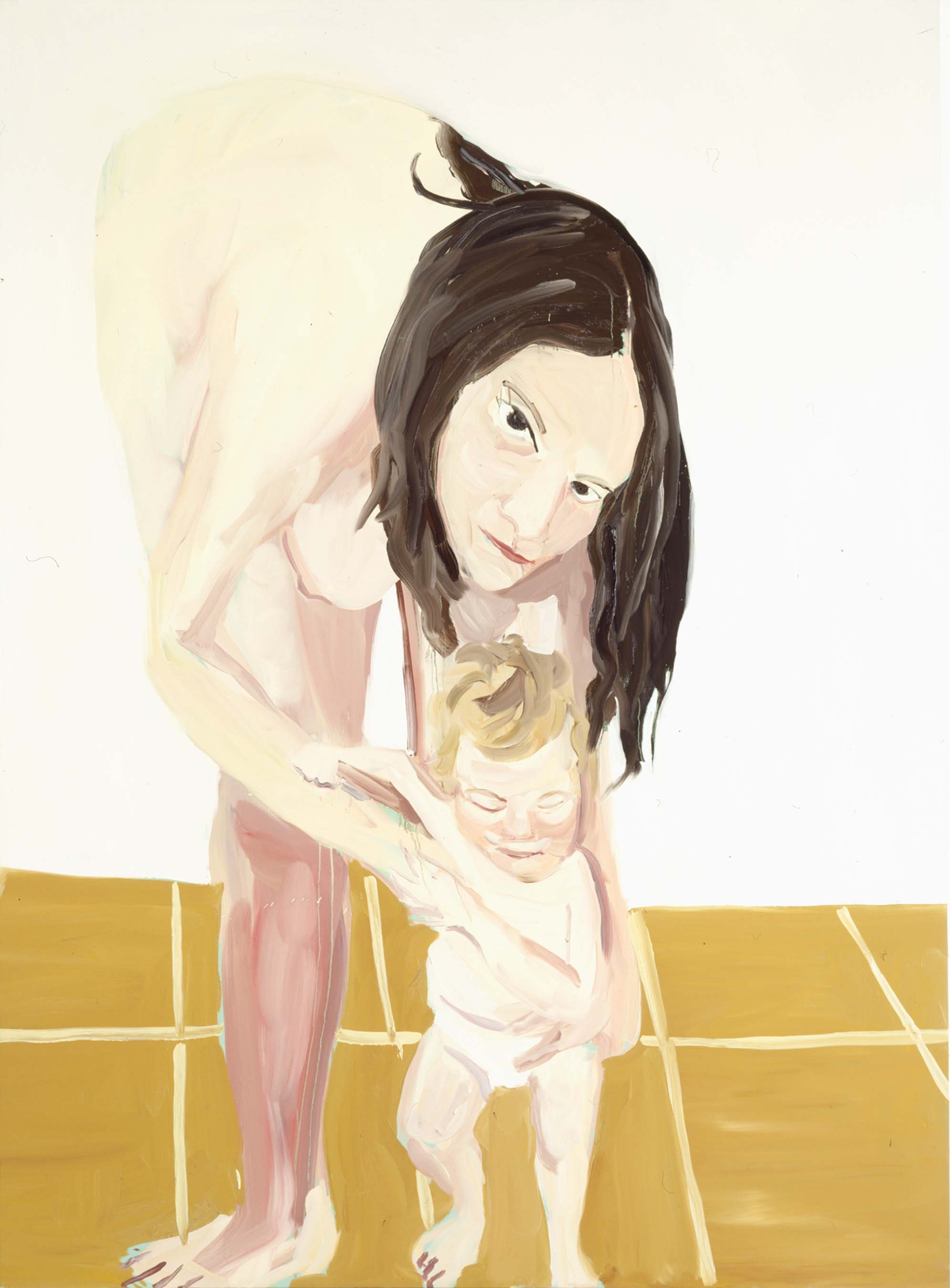
Chantal Joffe, Mother and Child II (oil on board, 2005)
Chantal Joffe, Mother and Child II (oil on board, 2005)
The future
As visitors exit, they are left to ponder the future of families. Golombok believes that while family structures may not change as drastically as they did in the last half-century, the challenges they face are becoming increasingly socio-economic and political. This takes us back to Cathy Wilkes’ installation which speaks to the impact of poverty and social disadvantage on the family.
Golombok is pleased that her team’s research has contributed to policy changes that have made society more accepting and inclusive of new family forms. But she worries about progress going into reverse, citing the overturning of Roe v. Wade in the United States, and non-biological mothers in lesbian mother families recently having their parental rights removed in Italy.
“There’s a backlash happening in some countries right now, so perhaps it’s a very good time to have this exhibition.”
Real Families: Stories of Change runs from 6 October 2023 - 7 January 2024 at the Fitzwilliam Museum in Cambridge. Admission is free but tickets should be booked in advance here.
The exhibition is accompanied by a catalogue featuring contributions from Mary Beard, Rebecca Birrell, Dorothy Byrne, Pasco Fearon, Alex Graham, Katy Hessel, Claire Hughes, Jackie Kay, Olivia Laing, Rosie Millard, Andrew Solomon and Susan Golombok.
Professor Golombok’s critically acclaimed We Are Family: What really matters for parents and children was published in 2020.
Read news stories about Susan Golombok's research here.
Published 5th October 2023
The text in this work is licensed under a Creative Commons Attribution-NonCommercial-ShareAlike 4.0 International License
Image credits
Mary Husted, Dreams, Oracles, Icons ...
The Women’s Art Collection, Murray Edwards College, Courtesy Mary Husted
Mary Husted, Luke at 10 Days Old, Born 28 January 1963. Mary Husted
Aliza Nisenbaum, Susan, Aarti, Keerthana and Princess, Sunday in Brooklyn. © Aliza Nisenbaum. Photo courtesy the Artist and Anton Kern Gallery, New York.
Cathy Wilkes, Untitled (Possil, At Last). Installation view 'The Encyclopedic Palace', Venice Biennale, Venice, 2013. Courtesy of The Artist and The Modern Institute/Toby Webster Ltd., Glasgow. Photo: Cristiano Corte.
Unknown maker, Vacuum desiccator bell jar. Bourn Hall Fertility Clinic
Image credits continued
Miriam Schaer, Untitled #11 (‘Children are what makes a real family’). Artist: Miriam Schaer, photo: Stephen DeSantis
Bart Heynen, Milo with her fathers and sister. New York City. Bart Heynen
JJ Levine, Alone Time 19. Courtesy JJ Levine / ELLEPHANT Gallery
Joshua Reynolds, The Braddyll Family. © Fitzwilliam Museum, Cambridge
Stuart Pearson Wright, Halfboy and Halfsister. Stuart Pearson Wright
Caleb Cole, Stripes. Courtesy of the Artist and Gallery Kayafas
Celia Paul, My Mother with a Rose. © Celia Paul. Courtesy the artist and Victoria Miro
Chantal Joffe, Mother and Child II. © Chantal Joffe. Courtesy the artist and Victoria Miro


